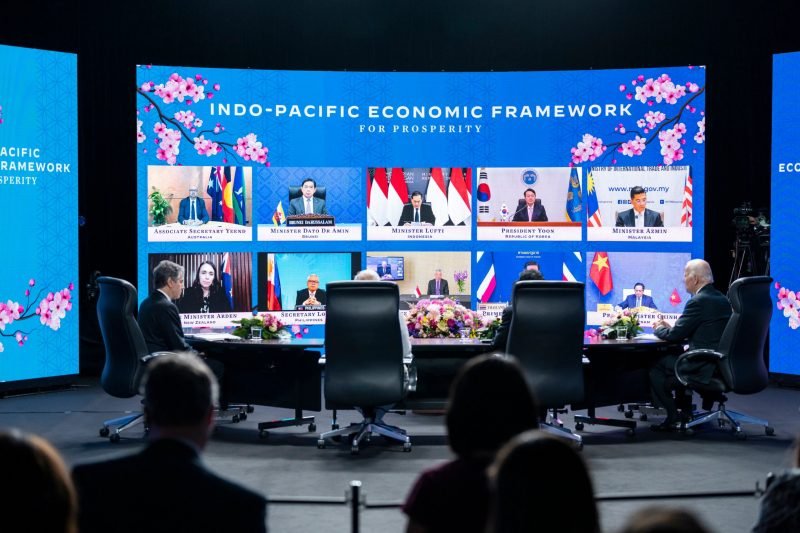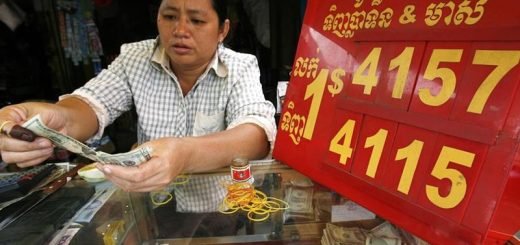Indo-Pacific: An Inclusive Concept That Excludes

The term Indo Pacific was introduced by British lawyer James Richardson Logan in 1850. (Medcalf 2020, 60) The dominant notion behind the concept of Indo Pacific is the ‘connections across two oceans’ i.e., the Indian Ocean and the Pacific Ocean. (Das and Putz 2019) Historically, there have been economic activities in primitive form in the shared waters of the Indo-Pacific in which China played a dominant role, which it tried to play in the Asia-Pacific also.
Indo-Pacific is not just a mental map but a strategic imagination in response to the growth of the Chinese footprint across the length and breadth of the region. The Quadrilateral Security Dialogue also known as the Quad, comprises the USA, India, Australia and Japan. It is an economic and security arrangement in making, within the larger framework of the Indo-Pacific. With the launch of the Indo-Pacific Economic Forum in the recent Quad summit, the picture of economic arrangement is becoming clearer. A formal security arrangement still seems a distant thing. But it shows the US attempt to revive and resurge its declining alliance system to counter China. (Das and Putz 2019)
In general, there are two dominant views regarding the Indo-Pacific, one is ‘inclusionist’ and the other is ‘exclusionist’. Inclusionists, include China and/or Africa in their conception of Indo-Pacific; and exclusionists, exclude China and/or Africa from their conception of Indo-Pacific. (Doyle and Rumley 2020, 22) Given that, regions are political constructs so inclusions and exclusions are deliberately done while delimiting the area to serve the strategic interests of delimiters. (Doyle and Rumley 2020, 24) Indo-pacific which is a politically constructed concept claims to be inclusive but it strategically excludes China. The exclusion which is sugar-coated with inclusion is fundamental to the concept.
Inclusiveness of the concept of Indo-Pacific can be understood by looking at the geographical area that it covers. It includes the whole of South Asia, Southeast Asia, East Asia, Oceania, and Australia. Perhaps there is no other region in the world which is geographically as large as this. This inclusivity is strategically designed to pull more and more countries toward the grouping as opposed to China. Anyway, it has raised the importance of many Asian states in the changing world order like India, which was not part of the erstwhile Asia-Pacific, finds itself not only included but also as an important pillar of the Indo-Pacific concept. Though Australia was part of the Asia-Pacific, it finds itself more included and relatable in the Indo-Pacific, as it searches for its identity in the new concept. It gives the ASEAN countries more centrality than they had in the past Asia-Pacific era. (Medcalf 2020, 20)

In every meeting of Quad, it is taken care of not to mention China. What does this nonmention mean? It means mentioning it without mentioning it. In simpler words, it means that, though nobody takes the name of China but every member state on the table knows whom their policies are targeted at. What is the ultimate aim of the policies and Indo-pacific concept at large?
According to Dennis Rumley and Sanjay Chaturvedi, the basics of principles and processes of regionalization says that ‘all regions are human constructions’ and ‘there is no such thing as a ‘natural’ region’. Therefore, some states are inevitably excluded from the constructed region while others become members. In short, the constructed region is a product of the purpose, the spatial vision, and the strategic goals of that which/who delimits it. (Doyle and Rumley 2020, 24)
Precursors of the Indo-Pacific can be traced back to thousands of years to a primitive economy of regional maritime trade and migration. (Medcalf 2020, 21) This is the claim which is often made regarding the naturality of inclusiveness of the region. The present-day Indo-Pacific is a political construct and the context in which it emerged in modern time shows that by no means it was to include everyone. The idea gained currency in the context that, seeing the growing Chinese assertion in Asia-Pacific, Shinzo Abe came forward with the slogan of ‘Free and Open Indo-Pacific’ in 2007, and ‘the rule-based order’ was also popularized. It was a clarion call to all the states in the region to act in concert and exclude China to check its dominance in the region.
A popular Chinese poem named Tao Te Ching, says that, ‘recognise beauty and ugliness is born, recognise good and evil is born’. (Addiss, Laozi, and Lao-Tzu 1993, 26) When seen from this perspective we find on one hand formation of a region brings countries of a certain geographical area together showing inclusion, on the other hand, it suo motu excludes the area outside the region, which depicts exclusion. It geographically excludes areas outside its construct of Indo-Pacific and it politically excludes the areas which fall under its construct of Indo-Pacific. As Katzstein has rightly said that regions are political creations, therefore in this region, delimiters of the area have the political mileage and strategic necessity to exclude China. (Katzenstein, n.d., 129)
Chinese foreign minister Wang Yi publicly rejected the concept of Indo-Pacific as an ‘attention-grabbing idea’ that ‘will dissipate like ocean foam’. (Medcalf 2020, 118) To this Rory Medcalf argues that it is China’s own behaviour in form of expanding military, economic and political presence in the region which is making the Indo-Pacific real. (Medcalf 2020, 14) It can be said in other words that China’s rejection of the concept of Indo-Pacific, shows Chinese discomfort with the concept, that’s what Indo-Pacific aims to achieve. After all, it was not made to please China.
Here the question arises if China would have accepted the concept of Indio-Pacific, what would have been its fate? If China would have accepted it the whole purpose of conceptualizing the Indo-Pacific would have been jeopardized. But the thing is that countries which have driven the idea of Indo-Pacific, knew very well that if China accepts IndoPacific and makes itself a part of Indo-Pacific, then it is ‘subdued without war’ in the words of Sun Tzu. (Tzu 2009, 11) So, when it does not accept the concept of Indo-Pacific, it makes Indo-Pacific more real, as since its inception it was aimed to not get accepted by China. So, it was a kind of checkmate by the countries driving the concept of Indo-Pacific.

Supporters of the Indo-Pacific concept say that it is inclusive to the extent that it rejects the centrality of China or the USA. It signals that China and the USA are not the only two nations that count, and warns against the psychological trap of what Bilahari Kausikan calls ‘false binaries’, of choosing between China and the USA. (Medcalf 2020, 16-17) It is to transcendence the binary between China and USA. Simply saying that there is no binary but multilateralism, is not going to make any difference unless the state actors in the Indo-Pacific region don’t see themselves as an active player in the ongoing game. But the reality is that they have not discarded the belief that the Indo-Pacific is a game being played between the binaries of the USA and China therefore, they are busy either balancing, bandwagoning or hedging. Because they know that the Indo-Pacific is both the cause and the consequence of the power tussle going on in the region. This balancing act helps them to act as a ‘laughing third party’. Both the parties tempt them with various aids and other temptations to pull them towards them. Now, they are the holder of the balance, garnering most of the benefits. The USA has donated 300 million coronavirus vaccines to the Indo Pacific region, which amounted to around 30% of its global contribution. U.S. foreign direct investment in ASEAN countries totalled $328.5 billion as of 2020, making the United States ASEAN’s largest source of investment. On the other side, Chinese trade with Southeast Asia, touched $685 billion in 2020, which is more than double of the region’s trade with the USA. (Lakshman 2021)
As far as liquidating the binaries is concerned, they have no or a little option. Because if they clearly reject the concept of Indo-Pacific, on one hand, they will lose the importance that they are enjoying in the changing world order, because of the concept, on the other hand, it will be received by the USA with displeasure. And if they wholeheartedly accept the concept and become an active player in the game being played, they will lose the perks from China.
The Southeast Asian states are hedging to keep going with the binary. They are dependent on the USA for security reasons and on China for economic and political reasons. The Indo-Pacific Economic forum launched by US president Joe Biden is joined by 12 other states including India. The launch of the Indo-Pacific economic framework is not just to integrate the region economically but also to counter China dominated RCEP. Some of the countries like Singapore, Thailand, Vietnam, etc. who are in RCEP and are hedging the US-China binary in the Indo-Pacific, also joined the IPEF. This shows the tilt of balance and the will of the Indo-Pacific countries to reduce dependence on China by diversifying their market.
Though Indo-Pacific is very inclusive, it dilutes the existing US-China binary by providing more importance and centrality to other players in the region. But this inclusion is based on the exclusion of China from the framework. The Indo-Pacific concept beautifully checkmates China by excluding it from the concept and sugarcoating the exclusion with inclusion.
References
Addiss, Stephen, Laozi, and Lao-Tzu. 1993. Tao te ching. Translated by Stephen Addiss and Stanley Lombardo. N.p.: Hackett Publishing Company.
Das, Udayan, and Catherine Putz. 2019. “What Is the Indo-Pacific? – The Diplomat.” The Diplomat. https://thediplomat.com/2019/07/what-is-the-indo-pacific/.
Doyle, Timothy, and Dennis Rumley. 2020. The Rise and Return of the Indo-Pacific. N.p.: Oxford University Press.
Katzenstein, Peter J. n.d. “Area studies, regional studies, and international relations.” Journal of East Asian Studie 2 (1): 129. 10.1017/s1598240800000709.
Lakshman, Narayan. 2021. “Explained | Understanding the U.S. strategy of ‘Asia Pivot.’” The Hindu. https://www.thehindu.com/news/international/explained-understanding-the-us-strategy-of-asia-pivot/article37995079.ece.
Medcalf, Rory. 2020. Contest For The Indo-Pacific Why China Won’t Map the Future. Australia: La Trobe University Press in conjunction with Black Inc.
Tzu, Sun. 2009. Sun Tzu: The Art of War (Restored Translation). Edited by Istvan Aggott Honsch. Translated by Lionel Giles. N.p.: Magoria Books.


















